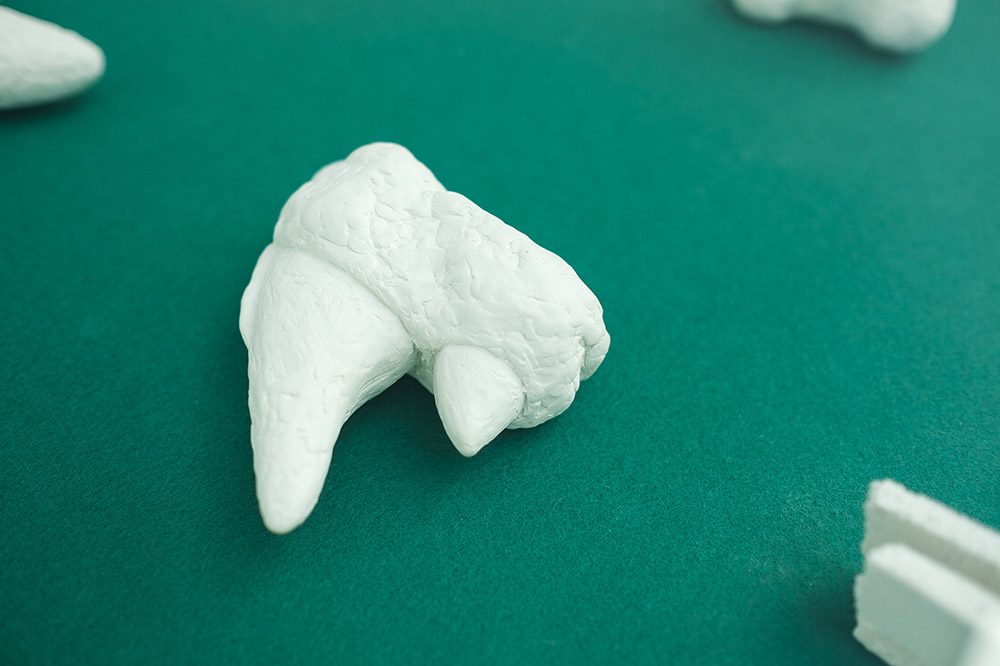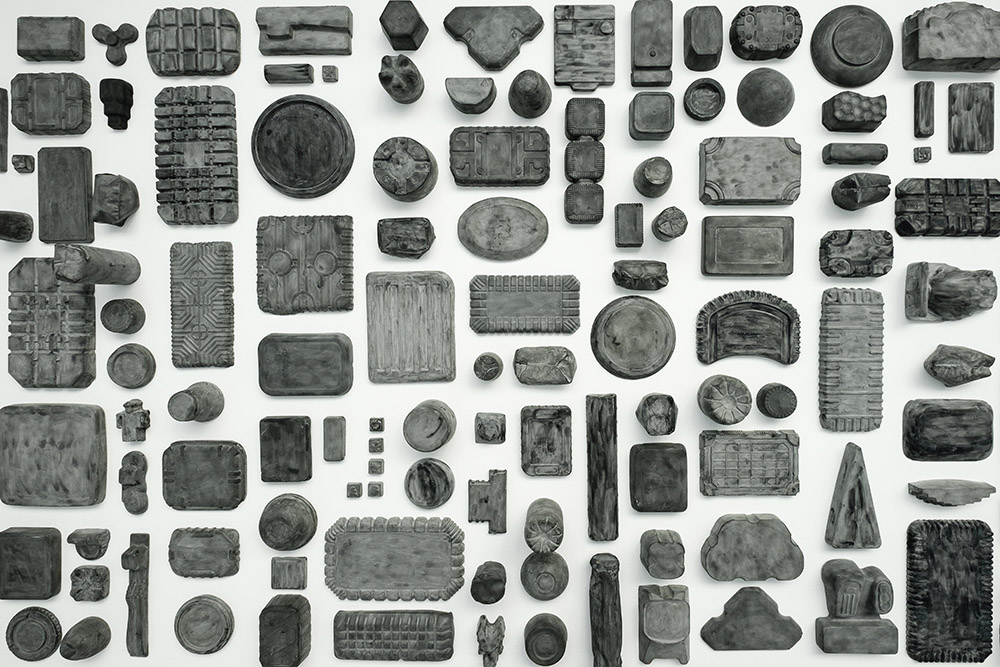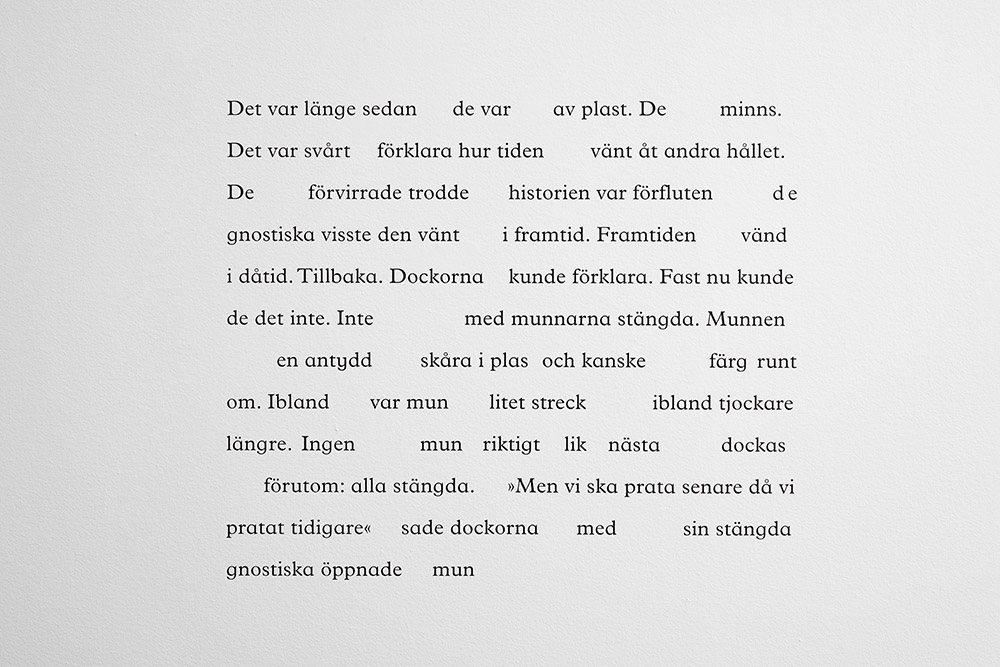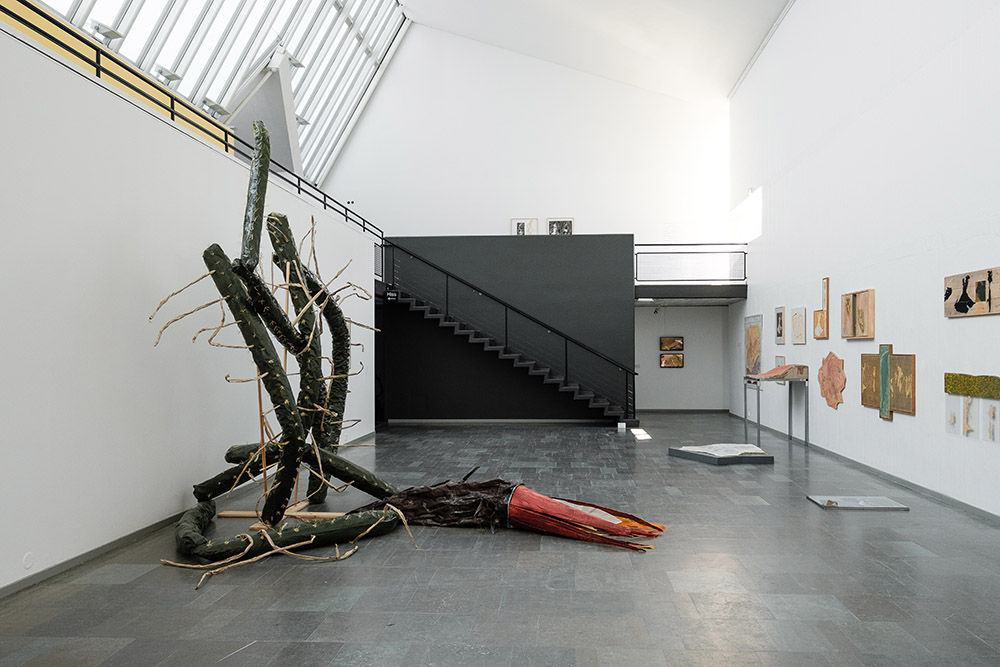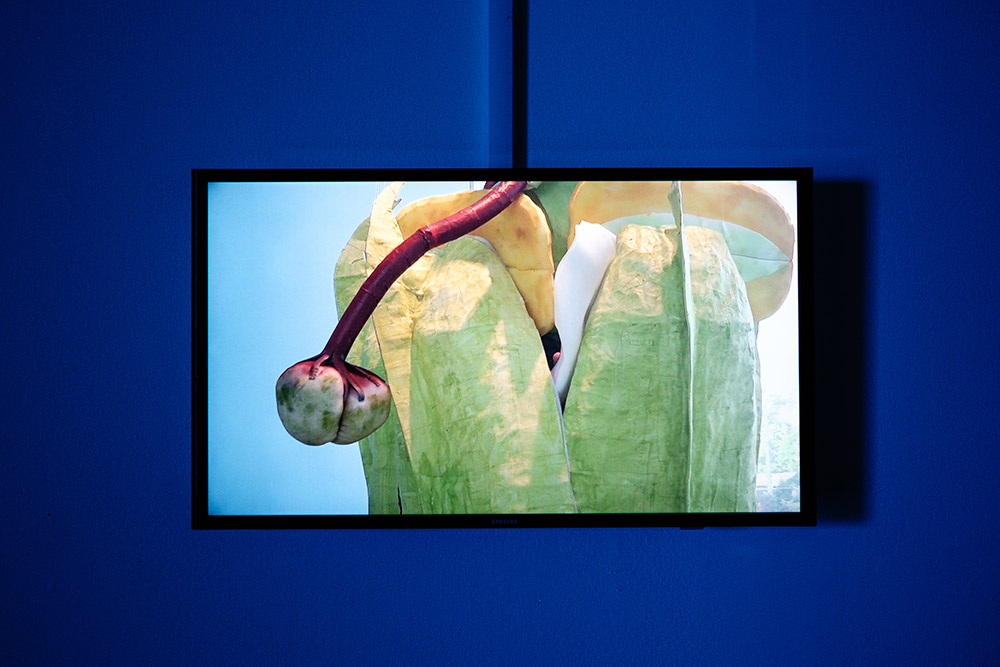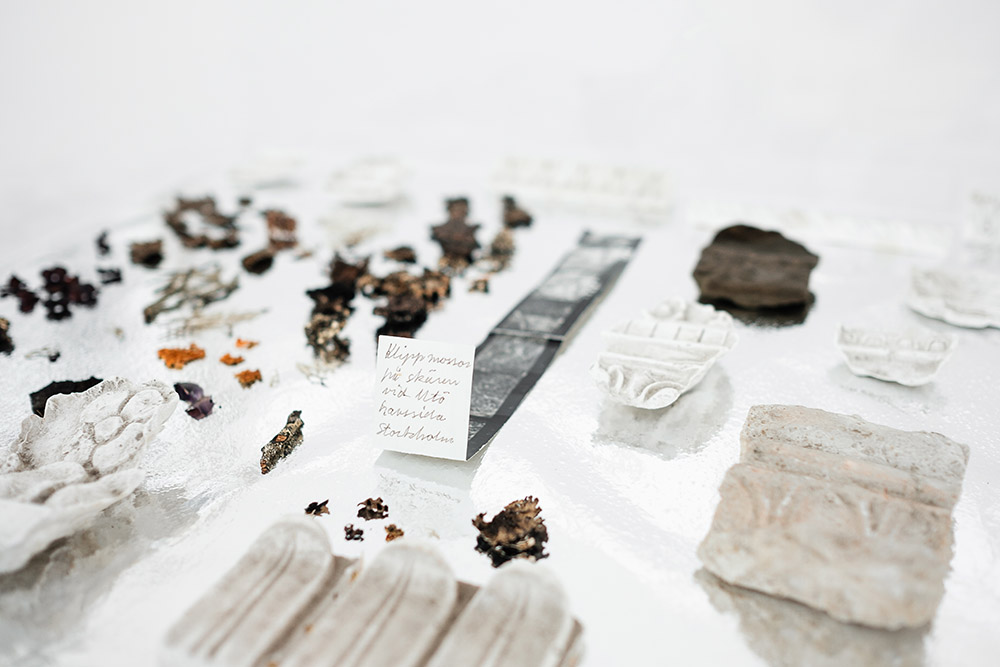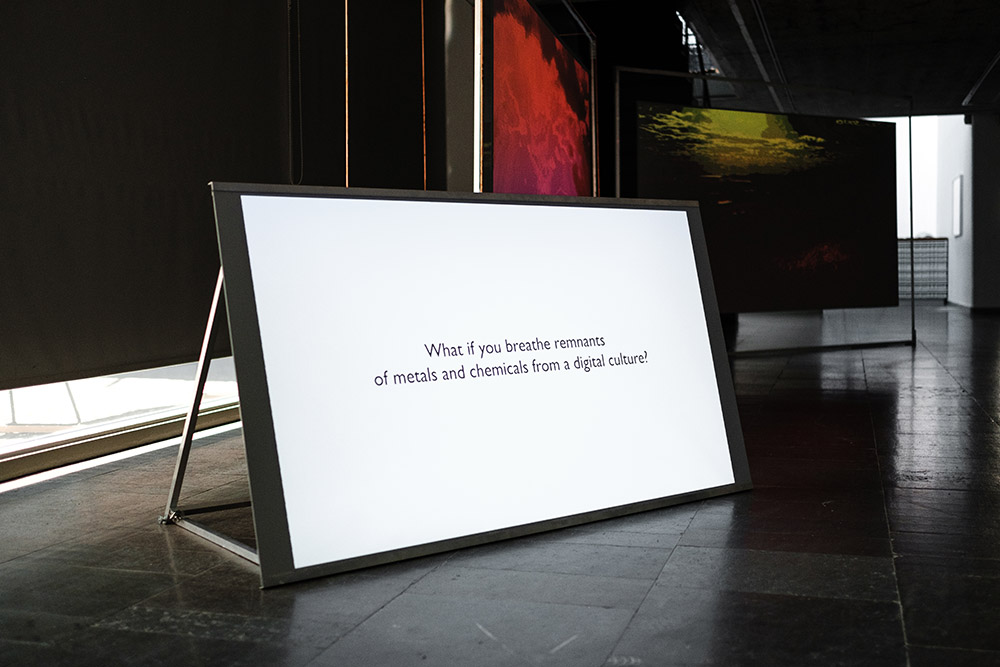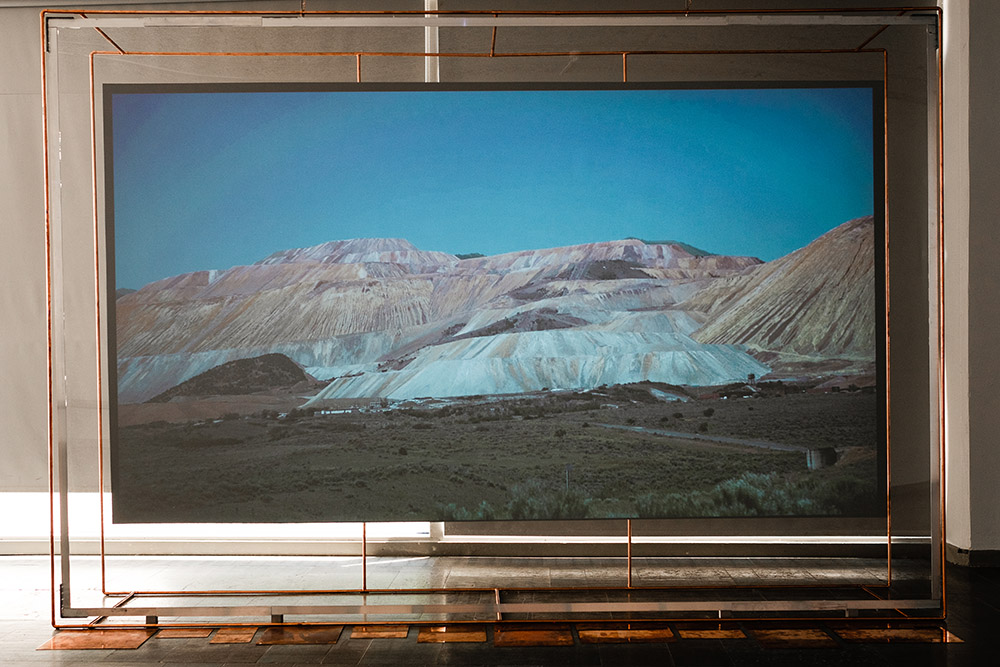ART-PRESENTATION: Environs
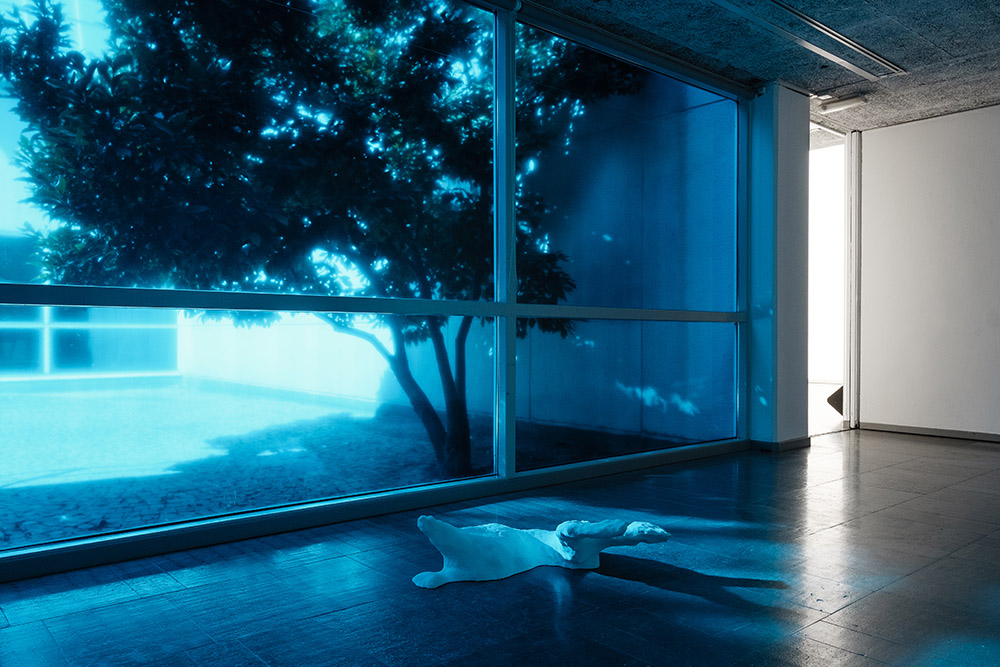 It is too easy for humans today to retain a self-image as separated from other species, from other organic and inorganic materials. Humanism and the enlightenment helped create anthropocentric views on history and the world. Yet contemporary art, philosophy and science often understand humankind as a small part of a larger whole. The creative human being today tends to be inscribed into the Biosphere in its entirety.
It is too easy for humans today to retain a self-image as separated from other species, from other organic and inorganic materials. Humanism and the enlightenment helped create anthropocentric views on history and the world. Yet contemporary art, philosophy and science often understand humankind as a small part of a larger whole. The creative human being today tends to be inscribed into the Biosphere in its entirety.
By Dimitris Lempesis
Photo: Lunds Konsthall Archive
The exhibition “Environs” showcases nine artists active in the area surrounding Lunds konsthall. Its title, Environs, alludes to the region around Lund but also constitutes an attempt to regard these environs as equally important as its human inhabitants. The participating artists all have diverse backgrounds and modes of expression; they belong to different generations and have chosen different paths in life. Something that unites them is that they all seem firmly rooted in an interest articulated by this exhibition: soil, sand, sediment (and, further down, minerals and fossils)—phenomena that yield energy but thereby also cause global warming. In his book “Sandskrift” (1988), Gert Aspelin describes his intense encounter, in the early 1970s, with the violent traces of erosion in the hills below the marketplace at Kivik. This piece of land, with its caved-in sand, would become his field of artistic investigation in the years to follow. Earlier influences from American Pop Art and attempts to make ‘meta-art’ would be scaled back, giving way to a new quest for ‘un-mediatised reality’. Aspelin describes his discovery of the sand masses as a dissolution of the relation between consciousness and reality. This was ‘a hunch of geological time’, conveyed in near-spiritual terms. In the exhibition Lena Bergendahl’s video installation “Berget som blev en bild” (The Mountain That Became an Image, 2018) premiered. Based on a research trip to Salt Lake City and Silicon Valley, it is a meditation on how contemporary digital technology emerges from and competes with the forces of geology and the Biosphere. The installation itself envisions something reminiscent to the inside of the camera. Two film collages show archival material from the Natural History Museum in Salt Lake City, the Computer History Museum in Silicon Valley and the Natural History Museum in Copenhagen. This is interwoven with footage of sand, minerals, copper mines, maps, deserts, mountain rifts, silicon chips and electrical circuitry. Ingela Ihrman has created a series of artificial bloomings, performed by herself wearing sculptural costumes. In the exhibition, “Nattens drottning” (Queen of the Night, 2018) blossomed during opening night, and after that is exhibited, in its wilted form, as a sculpture. The cactus species Selenicereus grandiflorus used to be frequent as a potted plant in Sweden. Its buds burst late in the evening and it blossoms only for one night. At the dawn of the next day it wilts. While blossoming, the cactus emits a scent reminiscent of orange blossom or vanilla. Åsa Maria Kraft shows work based on her three-part collection of poems “Randfenomen” (2015) and on her latest “Robotsand” (2018). The title refers to E.T.A. Hoffman’s story “Der Sandmann” (1816). In Robotsand, Kraft was influenced by photographs her daughter took of her plastic dolls: the child’s own world. The poems have a fragmented, cut-up style inspired by the lacunae in early Christian Gnostic texts. In Kraft’s poetry the perspectives are multiple, and always seem to escape the kind of thinking that starts with humankind. Anna Ling’s “Fossil och polystyrene” (2013) imagines a geological time frame starting from the future. Humankind’s rubbish, polystyrene, is seen next to shapes from the cycles of geological sedimentation. In the late 1960s and early 1970s, Mariana Manner worked in an architect’s office in Lund, where she befriended the architect Sigurd Lewerentz, known for having designed the churches at Björkhagen and Klippan as well as parts of the Woodland Cemetery outside Stockholm. “Friser, mossor och lavar” (2017) is based on Lewerentz’s own inspirational objects, which he gave to Manner in the late 1960s. One of the collections consists of wax and plaster casts of friezes and figures from the ruined city of Pompeii, made during Lewerenz’s honeymoon in the 1920s. The other collection consists of mosses and lichens from the cliffs around Lewerenz’s house on Utö in the Stockholm Archipelago. Ursula Nistrup shows two works relating to the primeval landscape at Hampi in India. The photographic series “Rock Music” (2015) documents the stone formations in the area. The photographs have been given a pink tint, as a continuation of the granite landscape. Nistrup sees the formations as potential musical structures waiting to be played. She has long been interested in vibrations at the intersection of what is understood as sound, noise and music. Also her installation, “Pink Pillars” (2018) is based on the musical columns of Vitthala. Their ornamented forms are portrayed as modules appearing in a state of ruin. The space is set with a sound composition, reminiscent of the combination of wind and sand that have shaped Hampi’s rocky landscape throughout the ages. Filippa Pettersson presents two sound works, both demonstrating how sound images of various materials don’t really give us access to their factual qualities. To make “A Flight with Shira” (2014) she attached a small recording device onto a tamed falcon, which allowed her to follow its movements through the air. In her second sound piece, “Pfsssssscccccchhhhhh” (2015), Pettersson conveys the sound of a microphone being destroyed by fire and water. Amalie Smith’s “Three Dimensional Shadows” (2016) is shown. It consists of three parts: a film, a plaster sculpture, a neon tube-light. The work is inspired by the antique sculptures found at the bottom of the sea outside the Greek island of Antikythera in 1900. Those parts of the sculptures that had been buried in sand were practically intact, while the body parts that had been exposed to sea water were strongly withered. Next to these sculptures, on the bottom of the sea, the so-called Antikythera mechanism, an antique mechanical “computer” was also found. In Smith’s film images of these remains of antique culture are woven together with the development of the modern computer during the Second World War and that of the atomic bomb at the same time. The film’s sequences are strongly tinted in red, green and blue. These are the three fundamental colors (RGB), from which all digital images are created. The exhibition “Environs” may be read as an account of how humankind has conquered and exploited land throughout history. It corresponds to a horizontal view reflecting the encounter between geological and human time, but also a vertical movement following water, plants and bodies descending through the underworld and ascending through the sky. The contemporary ecological debate keeps returning to cycles and loops. Rather than accepting the segmented and compartmentalized view of reality prevalent in agriculture and industry, all aspects of reality are acknowledged as profoundly enmeshed, as a continuum of gradual differences. Participating Artists: Gert Aspelin, Lena Bergendahl, Ingela Ihrman, Anna Ling, Åsa Maria Kraft, Mariana Manner, Ursula Nistrup, Filippa Pettersson, Amalie Smith
Info: Lunds konsthall, Mårtenstorget 3, Lund, Duration: 2/6-26/8/18, Days & Hours: Tue-Wed, Fri & Sun 12:00-17:00, Thu 12:00-20:00, Sat 10:00-17;00, https://lundskonsthall.se
